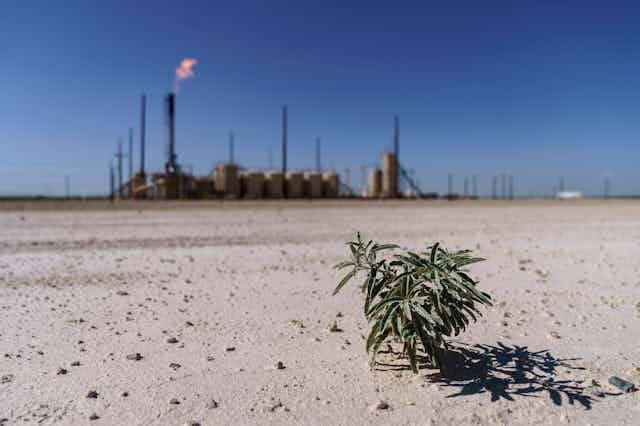Regulating greenhouse gas (GHG) emissions is an important part of Canada’s strategy to achieve net-zero emissions by 2050. However, a newly published study by our team of researchers at St. Francis Xavier University illustrates why regulation is only a first step.
When it comes to climate change, carbon dioxide gets the media attention. However, methane has 80 times more warming power within its first 20 years of reaching the atmosphere. Targeting methane is an efficient way of reaching Canada’s emissions reduction goals.
Along with signing the Global Methane Pledge, Canada has also introduced methane reduction targets for its oil and gas sector. And while these developments would seem to indicate that Canada is progressing toward its emission reduction targets, our study highlights the importance of not just creating regulation but enforcing it.
Low compliance decreases the certainty of achieving net-zero by 2050
In 2020, new methane regulations came into effect in British Columbia’s oil and gas sector. The regulation requires periodic leak detection and repair (LDAR) surveys at oil and gas facilities to reduce unintentional methane emissions caused by leaking infrastructure.
While it is worth acknowledging that our data is from the first year of regulation, which inevitably involves several challenges, the results were nonetheless disappointing. We found that, in 2020, B.C. oil and gas companies demonstrated only 62 per cent compliance with the provincial regulation.

Optimistic readers may see these compliance figures as positive; the glass is more than half full given most producers complied. However, the modelling on which emissions reduction regulations are based assumes 100 per cent compliance.
This means that 100 per cent compliance is required to achieve the outcomes that the regulations were designed to promote.
So, if 95 per cent wouldn’t be good enough to reach emissions reduction targets, 62 per cent really isn’t good enough. The gap between regulatory modelling and actual emissions reductions is a major barrier to reaching net-zero.
In 2020, compliance was likely impacted by the pandemic. However, the BC Energy Regulator did not suspend its LDAR requirements in 2020 and producers were still expected to follow regulations. While the situation seems to have improved from 2020, compliance gaps remain.
Policy lessons
Data from the first year of methane regulation in B.C. has provided several important insights.
Principally, a 62 per cent compliance rate tells us that not enough is being done to enforce regulations. Canada needs to introduce enforcement mechanisms if it wants to achieve meaningful emission reductions from all producers.
One example of strong enforcement is in New Mexico where, only days after failing to report methane emissions, five oil and gas producers were fined a total of US$275,000.

Fines aren’t the only option. A stricter permit renewal process, royalty rate variances, or restrictions on development can also help enforce regulation. If Canada introduced enforcement mechanisms, the gap between federal models and actual emissions should begin to close, putting us on a surer path to net-zero.
The second lesson from the study relates to LDAR methodology. Regulation requires that most facility types be surveyed with instruments. However, some facility types can be screened without the use of instruments, using only the senses of hearing, sight and smell. Our study showed that screening surveys are overwhelmingly ineffective and more expensive.
This conclusion is consistent with industry’s own Methane Guiding Principles, which recommends that all LDAR surveying be done with instruments.
Another issue we found was that surveys conducted by oil and gas producers internally tended to report unrealistic or sometimes very high values of methane compared to surveys conducted by a third party. Where good measurements help us track the efficacy of methane regulations, inaccurate data clouds our picture of progress. Third-party verification would be a good idea.

Lastly, our study was possible because the relevant LDAR data was accessible. Currently, British Columbia is the only province to publish LDAR data associated with methane regulations.
Increasing the efficacy of our regulations requires publicly available data, but it’s also important that regulators improve the lack of clarity surrounding the number and type of facilities in operation.
Improved datasets would increase our ability to evaluate regulatory effectiveness.
Changes to regulation must be implemented now
With the impacts of climate change blazing across the country, it’s clear we must keep pushing forward. In studies like this one we learn how to maximize regulatory effectiveness. We can only achieve net zero if we act on these lessons.
Read more: Methane must fall to slow global heating – but only 13% of emissions are actually regulated

